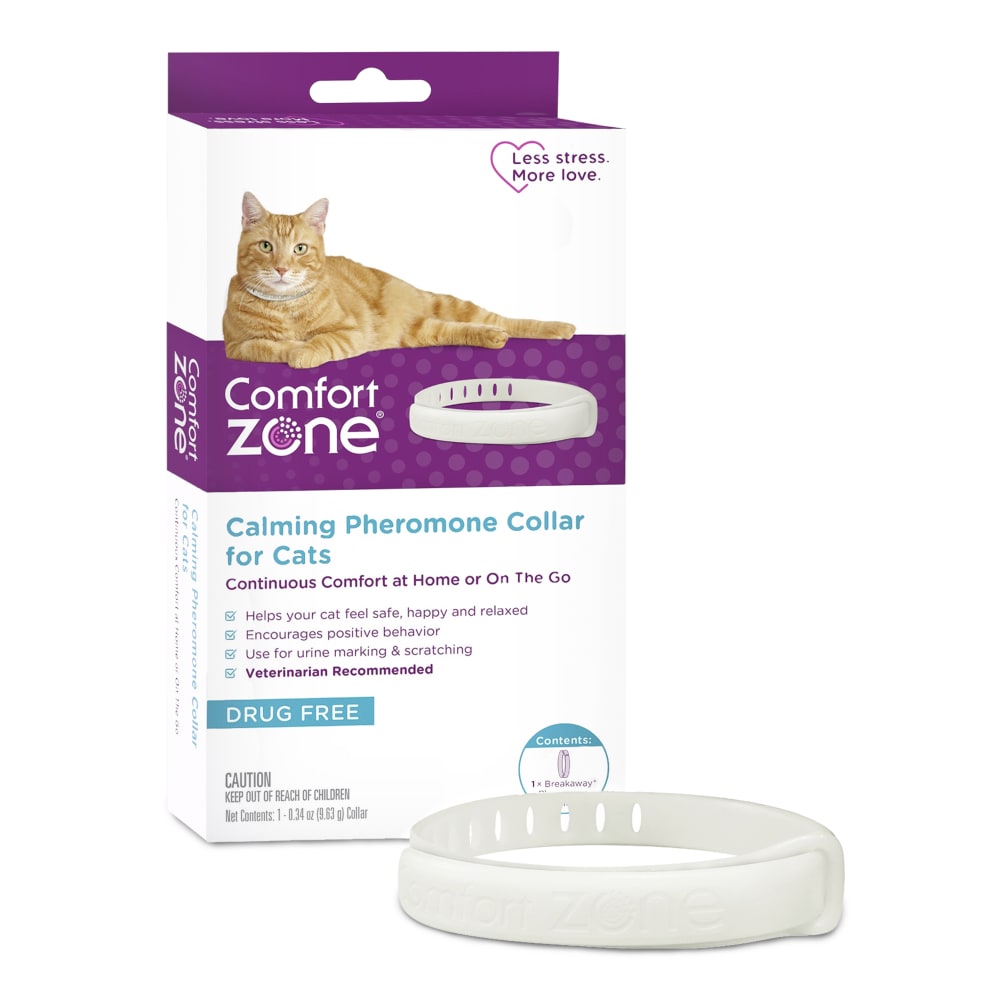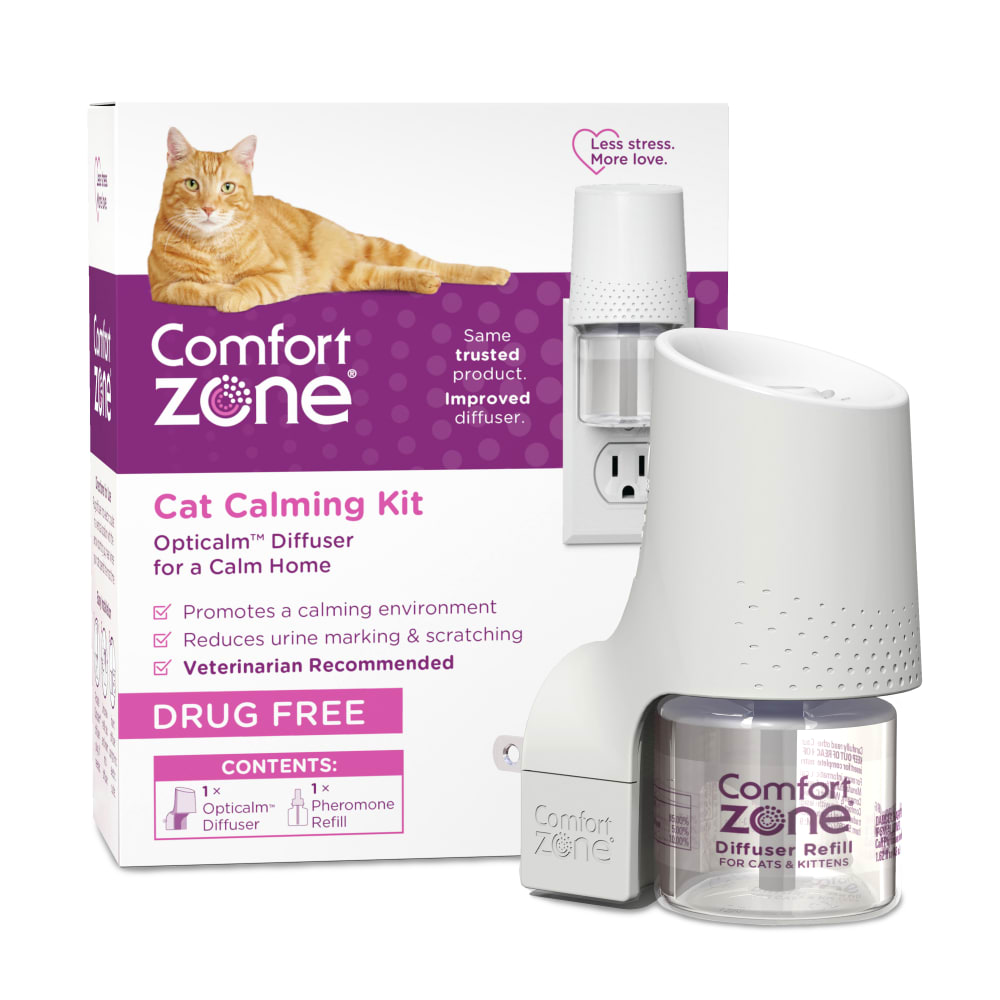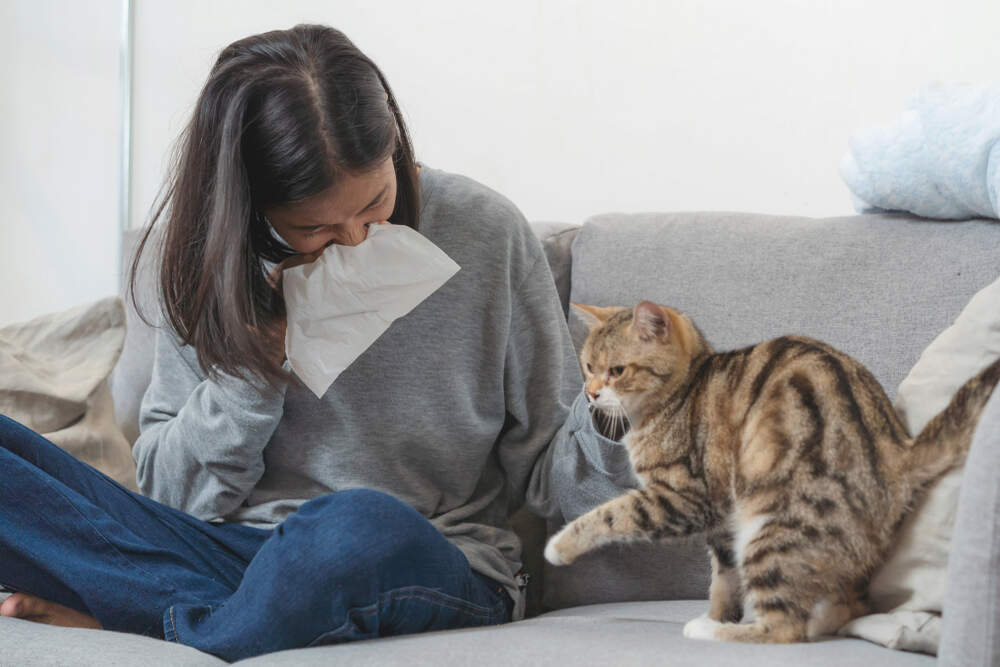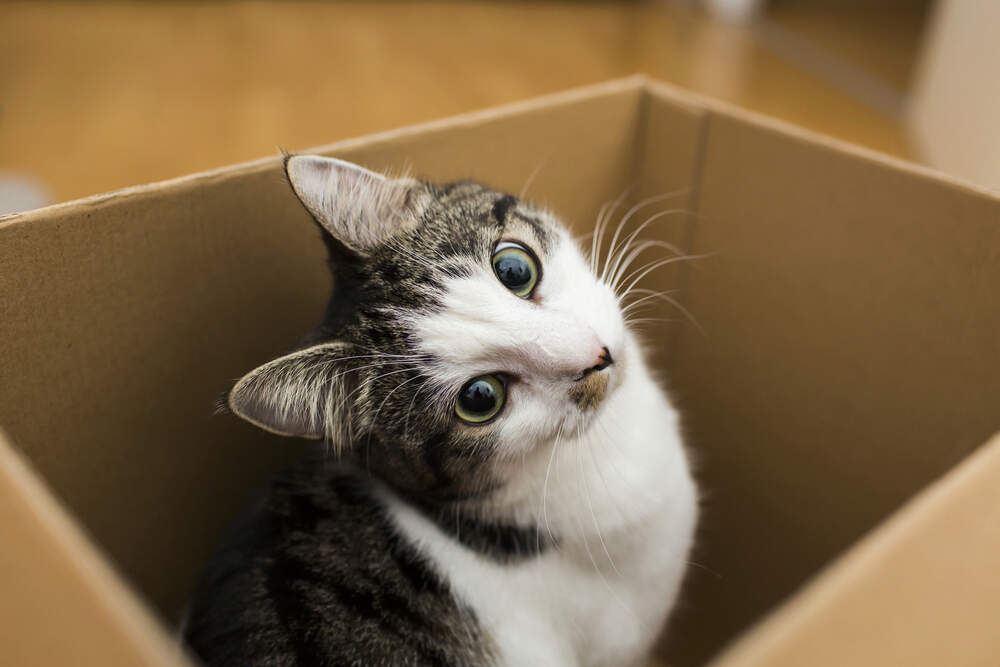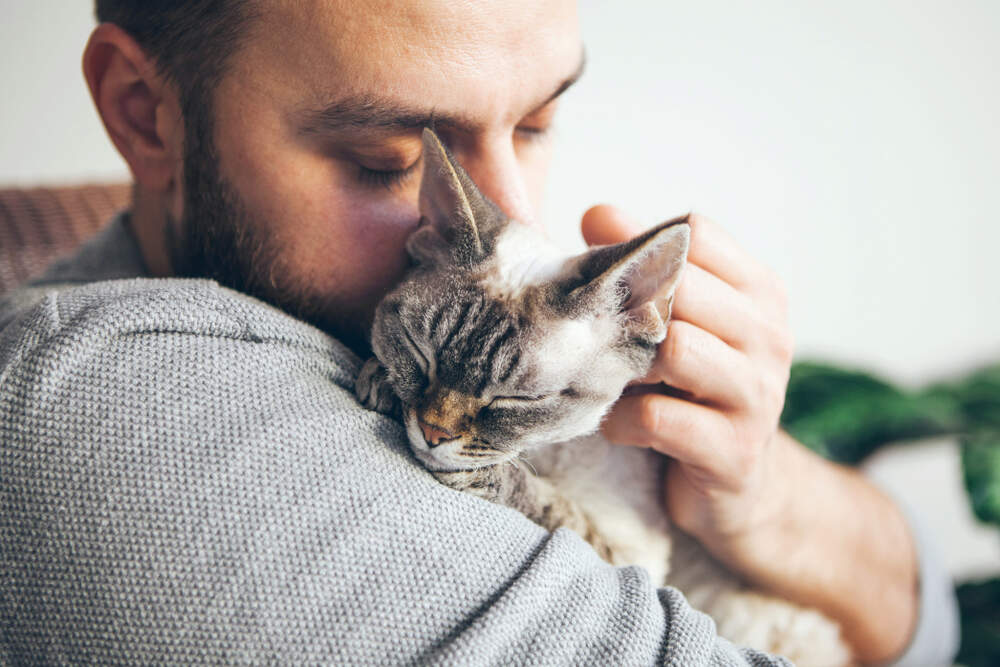Why Does My Cat Knead Me?
Many cat owners are familiar with kneading or, as some fondly call it, "making biscuits." But what is the story behind your cat's gentle curl of her paws? Although kneading can have many different causes, it's often a sign your cat feels safe near you and loves you very much.
Cats of All Ages & Sizes Knead
Kneading is an activity shared by cats of all shapes and sizes. It involves pushing forward with the front paws into an object—like a blanket or even your lap—while alternating between the left and right paw. Some cats purr while kneading, and others may knead a bit with their back paws too. Some gently knead, while others extend their claws and can leave a scratch.
Both female and male cats display kneading behavior. Kittens and elderly cats may knead. Even big cats in the wild, like lions or tigers, are known to knead as well.1
Cats Find Kneading Comforting
Most of the time, cats knead because they find the action comforting. When they were kittens, they would knead while nursing. As adults, this sense of comfort still carries on whenever they knead. The nostalgic feeling of kittenhood may spill over into a kneading action whenever they feel particularly comfortable or happy. So you might notice your cat kneading when you're petting him or talking to him, for example. In this way, kneading serves a function similar to purring.
Cats Knead You Because They Feel Safe
If your cat is kneading you, it's likely because she feels safe with you. Just like she kneaded her mom when she was a kitten, she's now kneading you—her new "pet-parent." If she feels safe and secure when she's with you, she may express this with a gentle knead. It's the same reason your cat may purr when you snuggle close to her.
Kneading May Help Mark You as "Territory"
Kneading can also serve as a way of marking territory, just like scratching does. Cats have scent glands in their paws, so both kneading and scratching provide ways to leave their "mark" for other cats to notice. This is why your cat may knead his favorite blanket or even you. He's telling the world you belong to him and you're part of the same family.
Your Cat May Knead You Before Going to Sleep
Do you ever notice your cat kneading her blanket or soft bed when she's getting ready to snuggle down for the night? Maybe she kneads your lap or stomach before she curls up on you for a nap. Cats in the wild sometimes knead to gather all the grass and leaves together to make a thicker bed.2 This habit may carry over into some domestic cats. It's similar in some ways to a do scratching his bed or turning in circles before lying down.
Some Cats Knead While Chewing on Blankets
Sometimes cats don't just knead blankets before falling asleep. Sometimes, they knead and suck or chew on the blanket simultaneously. This action can be really cute, but it's possible for a cat to spend too much time doing it. There are several theories why cats do this.3 Some believe it happens to kittens that were separated from their mothers too young or were hand-fed "bottle babies." Another theory is that, like a toddler sucking on his thumb, it's a source of needed comfort.
Others think cats may turn to this action when they feel overwhelmed because it's an activity that commands all their attention. Interestingly, some breeds are more prone to this type of kneading, like Siamese cats.
Sometimes Cats May Knead Excessively
Although kneading is a healthy, relaxing activity for your cat, it can sometimes go a little overboard, similar to a cat's scratching instinct.
If you notice your cat is kneading more than usual, it could be because of stress. The comforting action might help lessen any discomfort he's feeling. If you recently adopted a second cat or there's a stray wandering around outside, your cat might knead as a way to mark his territory because he feels insecure.
Sometimes your cat's kneading may hurt you because his nails are too long. In this situation, simply trimming his nails or getting some cat scratchers can help. Or put a thicker blanket on your lap so you can't feel the claws.
Help Your Cat's Emotional Health
Kneading is perfectly natural and healthy for your cat. But if your cat is kneading too often, you might want to take a few actions to encourage her to knead less.
Focus on your cat's e-meow-tional health, not just her physical health. A stressed cat may knead too much, so plugging Comfort Zone Calming Diffusers in the rooms where she spends the most time may help create a calming environment. Or, try the Comfort Zone Calming Collar, so those calming feelings are with your cat wherever she goes. If your kitty feels a little stressed because of another cat in your home, then try the Comfort Zone Multi-Cat Diffuser.
Don't punish your kitty for kneading, as this will just cause more stress. Instead, redirect her attention to playing with a toy, so she's distracted. Also, try playing with your cat more and use clicker training exercises to build your bond. This might lead to her feeling less stressed and reduce the "need to knead." Set up some cat trees and cat condos for her to climb since higher spaces can help a cat feel more confident.
Kneading is a sweet activity that's often your cat's way of showing she loves you, feels comforted by you, and considers you part of her family. Show her you feel the same way with lots of snuggles, treats, and playtime.
1. McCarthy, Erin. "11 Ways Big Cats Are Just Like Domestic Cats." Mental Floss, 3 March 2016, https://www.mentalfloss.com/article/57746/11-ways-big-cats-are-just-domestic-cats.
2. AAHA. "Is My Cat's Kneading Normal?" AAHA.org, https://www.aaha.org/your-pet/pet-owner-education/ask-aaha/is-my-cats-kneading-normal/.
3. Kelley, Jane A. "Why Do Cats Suck on Blankets? 5 Reasons." Catster, 11 March 2020, https://www.catster.com/cat-behavior/why-do-cats-suck-on-blankets.


